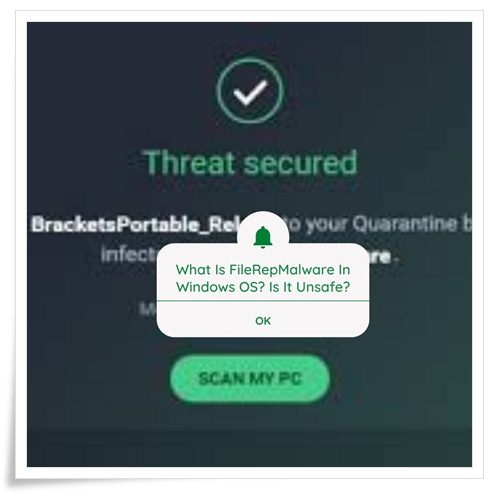
The most common antivirus software products, notably Avast and AVG, have two techniques to detect whether a document is malware/virus or not. They do this by sticking to a predefined list of infections and malware. If a file’s name exactly matches that of a predefined malware or virus, then you are sure that it is a virus and will be safely eliminated. Another method is to assign a track record rating to documents, and if the data does not meet the online reputation rating, that file is called a tag — it may or may not be a virus, we can’t deal with it, say security.
So what files are these? This is data associated with recently created websites or current software applications or applications not yet allowed listed and FileRepMalware on Windows operating systems. So how exactly do you check whether it is malware or not, and should you remove it?
How does the Antivirus assign the File Associate malware tag?
The main criterion for assigning the tag to any application is that the application’s accumulation must be reduced. An application with a low rating indicates fifty per cent downloaded documents, has not been included in the clean antivirus checklist or does not have an appropriate signature from a trusted publisher or Antivirus. In many cases, the low-scoring applications are detected as infection or malware and flagged with the Data Rep Malware tag by Antivirus.
There are various techniques to check whether an application is infected or not.
Virus total
If any documents on your System are infected with FileRepMalware by your antivirus program, use Virustotal free online device to check the data, whether it is risk-free or not.
Right-click the file on the antivirus page and select the option that can detect the location of the data.
Open the Virustotal site from the division web page. Click on the selected file selection to publish the dubious data. Virustotal will certainly disclose information about the security status of the documents.
Scanner
- You can use the portable malware scanner.
- I am currently using a different antivirus scanner.
Windows Defender Boost Time Checker is an offline scanner. This is the best option to identify the infected file. If you are using pirated home windows and trigger using the KMSPICO tool, then there is a high risk of contaminating your System documents. Therefore, it is highly recommended to use the original operating system and minimize the possibility of a virus attack.
You can use File Unlocker to unlock the FileRepMalware file. If it is opened safely afterwards, delete it from the System.
Read More: How to solve “Stopped working to download and install attachments from multimedia messages
How to get rid of FileRepMalware quickly?
Suppose the VirusTotal scan somehow revealed that the document is a genuine security risk and not a false positive either. In that case, you need to take the necessary actions to remove the virus infection altogether. This requires the use of a reliable security scanner.
The first thing you need to do is update your antivirus programs. Whenever a file is misidentified with FileRepMalware, it will be allowed in the upcoming upgrade. As a result, the incorrect benefit will not appear again.
If a brand new file is incorrectly identified with FileRepMalware, the relevant security update will usually allow the documents to ensure the incorrect result does not occur again.
Both Avast and AVG are updated immediately when a new viral data source signature emerges. However, a handy custom modification or an additional third event program can prevent this ability from being used. If your AV customer doesn’t update immediately, go to this website: Avast for Avast or AVG for AVG to update your security suite to the latest version.
If you’re still getting false positives with FileRepMalware after updating the virus signature variant to one of the latest variants, switching to a different antivirus suite is a quick fix. Better yet, remove the existing third-party security plan and start using the built-in security suite (Windows Protector).
Last words
Adware or potentially unauthorized programs often infiltrate Internet browsers with free software downloads. Remember that the safest resource for downloading free software programs is from designer websites.
Be very careful when downloading, installing, and updating free applications to stop adware installation. Choose the personalized or specialized instalment option for previously downloaded free programs – this shift uncovers all currently unused installed applications along with your freely chosen program.
Leave a Reply